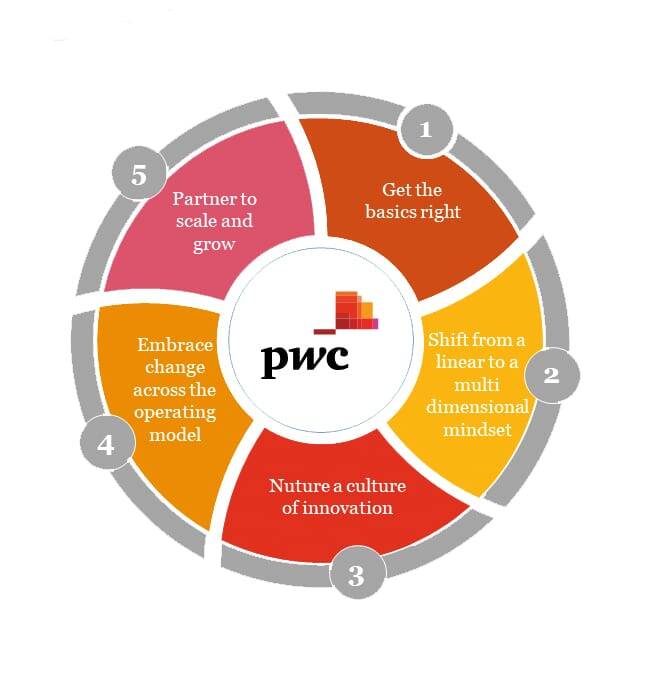This is the Sponsored paywall logged out
Human-centric transformation of your front office is the critical factor in maximising value from the energy transition
 At a recent conference on AI, a senior utility executive was overheard muttering their frustration about the ironies of the status quo. On the one hand, there was the promise of innovative technologies opening up new ways to connect with customers, deliver automation and improve efficiency. And yet for all this upside, somehow it felt the customer and the front office employee of the utility company were drifting apart.
At a recent conference on AI, a senior utility executive was overheard muttering their frustration about the ironies of the status quo. On the one hand, there was the promise of innovative technologies opening up new ways to connect with customers, deliver automation and improve efficiency. And yet for all this upside, somehow it felt the customer and the front office employee of the utility company were drifting apart.
This distancing is a subset of the broader upheaval sweeping the energy sector. Decarbonisation, decentralisation and digitalisation are reshaping business models and breaking down traditional values chains. Amid all this change we must also consider the transformation of the relationship between customers and energy companies. Engagement is becoming more dynamic and technologically enabled, while customers now expect a greater portfolio of services to be provided quickly, on their terms, seamlessly integrated across a variety of channels. Those companies that can shape their business to reinforce the link between front office employees and the end customer will be those most likely to capture the growing opportunity in the emerging energy value chain.
New entrants, new value chains and new business models are emerging
In the UK market there has been a seismic shift in the provision of energy with the larger power and gas utilities finding themselves in competition against an array of new entrants, which has led to a swelling of customer switching.
Much of this disruption has been driven by smaller companies with a more agile and innovative way to develop and deliver services to customers. Additionally, major oil companies are also making inroads and investing in the market. Several of the oil and gas majors are continuing to transform their legacy model with a more significant move downstream, in an effort to own the customer relationship. We are seeing this across a variety of strategic areas including market access arrangements, investments in electricity and gas retail, battery storage and electric vehicle (EV) charging.
We are also seeing a broader shift from products to services. In the UK, for example, there are pilot projects with companies offering households the opportunity to buy a heating plan tailored to individual lifestyles with home heating scheduled either hour-by-hour or room-by-room. As part of this services trend, there is a blossoming of new offerings around the “connected home”, which, according to PwC research, is worth some £11 billion.
The connected home continues to be an area of opportunity for utilities as they look to expand their footprint throughout the home and share of wallet. This market is evolving with the likes of Lucid, a technology start-up originally developed and supported by Toshiba.
Against this backdrop of increased competition and change, companies are reinventing themselves. The larger UK energy suppliers have reduced their exposure to carbon-intensive operations in power generation as they focus efforts on becoming an integrated energy service company. Many UK utilities are also developing EV charging related services ranging from the installation of chargers to providing renewably sourced energy for EV drivers, as well as V2G (vehicle-to-grid) offerings.
Despite these exciting new developments, the energy retail sector continues to grapple with an array of perennial challenges:
● High customer and operational demands;
● Constant margin erosion from intense competition;
● Low levels of customer satisfaction and trust;
●* Political and regulatory pressures;
● Vulnerable customers and variable costs to serve.
All this is creating an operating environment with wafer thin margins and weakening market capitalisation for some of the leading players.
Despite these challenges, energy retail remains active from a transactions perspective with further market consolidation expected in the next year or so, highlighting the value that many see in the long-term customer relationship.
Five steps for putting humans at the heart of your front office
In order to survive and grow in this market, we are seeing signification transformation in the role of the front office. Successfully navigating this transformation has a number of challenges and complexities but there are several key themes emerging that all centres around the customer and employee experience.

Step 1: Get the basics right
Energy companies need to establish and maintain a foundational level of trust with their customers if they are to earn the right to engage across additional products and services. This means all the basics need to be in place, from being able to issue bills accurately through to a core digital customer experience. This is also critical in creating a positive environment for employees to have more positive conversations that enhance the customer experience.
Step 2: Shift from a linear to a multidimensional mindset
Engaging the customer is no longer about single channels, linear journeys and one-dimensional interactions. Customers increasingly exist in an “always on” state, reacting to information in real-time. They also interact with organisations across multiple channels at the same time, forcing energy companies to ensure they have the technology platforms to orchestrate a more dynamic and flexible experience.
A key part of this orchestration is giving employees the right information at the right time to integrate into that experience. This will not only drive improved efficiency and customer experience, but also increase employee satisfaction and retention.
Step 3: Nurture a culture of innovation
In this new operating environment, energy companies will need to embrace innovation and embed a culture of “test, learn, fail fast, learn and scale”. Many utilities have set up standalone divisions to address innovation, but they are unsuccessful in exporting this innovation across the whole organisation to create value.
Fostering and successfully integrating innovation at the grass roots of the organisation will begin to generate a wave of cultural transformation across the whole firm. In order to do this utilities need to create trust that allows employees to fail, encourages different ways of working and show full commitment in delivery.
Step 4: Embrace change across the operating model
Energy companies must have the courage to make a step change in their operating model. This could mean having to walk away from legacy investments not delivering the capabilities required or hampering other areas of the business.
For example, some utilities may be saddled with technology portfolios that are no longer “fit for purpose”. Having sunk the investment they will be loath to abandon the platform even if they are struggling to compete with more nimble players with a lower cost to serve.
However, companies will need to evaluate clearly the benefit of walking away from those investments rather than making incremental improvements over time.
Having the right tools that truly empower front office employees will be essential for creating the customer and employee experience needed to transform the business model.
Step 5: Partner to scale and grow
Building the breadth and depth of capabilities required to maximise the potential from the energy transition will be challenging for a utility to do in-house. Many energy companies will need to partner effectively across an ecosystem of technology platforms, vendors and integrators to develop a model with the ability to gain scale and grow.
Front office transformation is all about blending business, user experience and technology
Those with the ability to tackle each or a combination of these critical enablers will be the ones that position themselves to capitalise on the full market opportunity in front of us. Energy companies need to have a clear strategic vision that is translated into a comprehensive view of what their front office can and needs to do in order to deliver.
All sales, marketing and service capabilities are increasingly underpinned by a complex operating model that needs to be integrated across all dimensions to deliver a seamless customer and employee experience. Successfully transforming your front office is not an easy task and is not all about technology. Companies should view this transformation through multiple lenses – the business, the experience and the technology – to really deliver on the business case and strategic objectives. At PwC we are seeing our “Front Office Transformation” capabilities and “Business, eXperience and Technology” (BxT) delivery methodology making a step change in the value we create for our clients, their employees and their customers.
Case Study: Shell
In recent years Shell has made a number of strategic investments across the new energy value chain. Given the ongoing trend of electrification, Shell continues to move further downstream and seize the opportunity around the customer. Acquisitions and investments to date include:
● An energy retail business, First Utility (rebranded as Shell Energy), which supplies electricity to residential customers;
● A home energy storage company, Sonnen, in Germany;
● An electric vehicle charge point operator, New Motion.
Case Study: Lucid
Originally developed and supported by Toshiba, Lucid offers a unique set of data and analytics capabilities as they aim to empower change through energy optimisation.1
The current product offering is focused on disaggregation of smart meter data to provide real-time (10 second) customer usage insight across a range of 11 product features including activity breakdowns, consumption advice and “everything off” checks.
The value for both utilities and customers is providing the insight and transparency to promote energy efficiency, cost management and ultimately drive customer engagement.
Lucid have been building their capabilities over the past three years, and launched to the market this month, following the completion of a number of user trials. Their strategy is for significant expansion across other areas of the value chain.
For further information, visit: https://www.pwc.co.uk

Please login or Register to leave a comment.